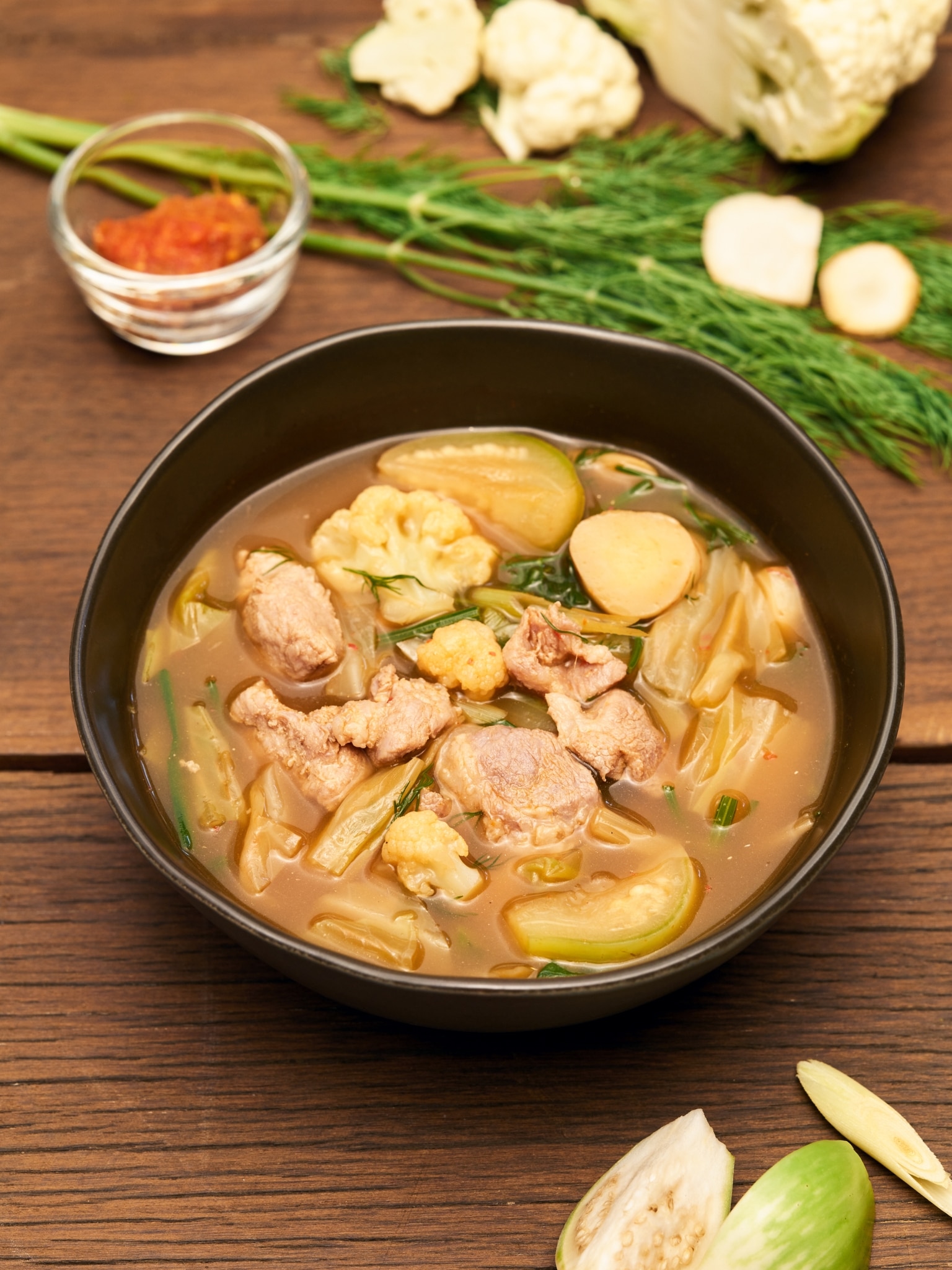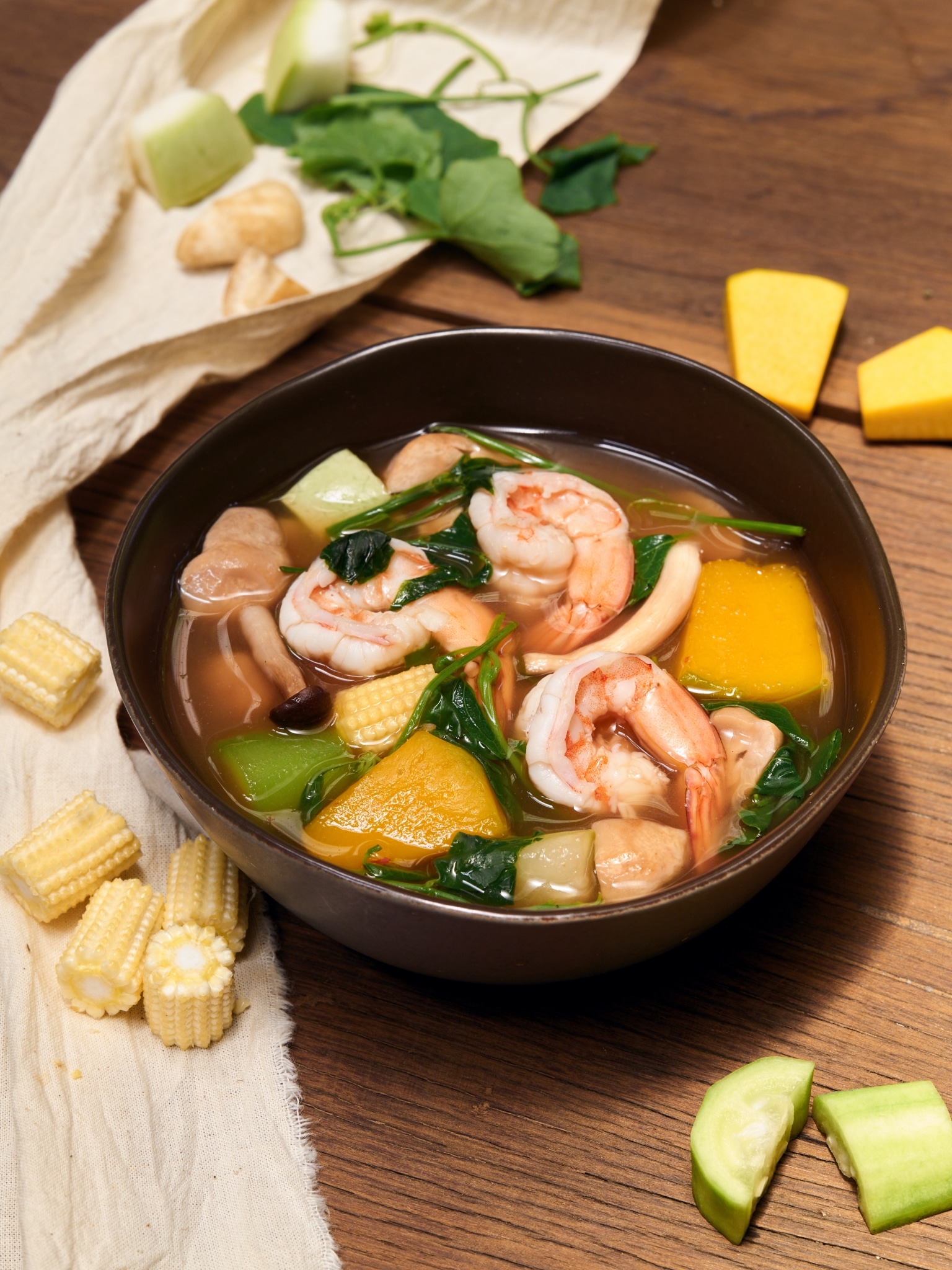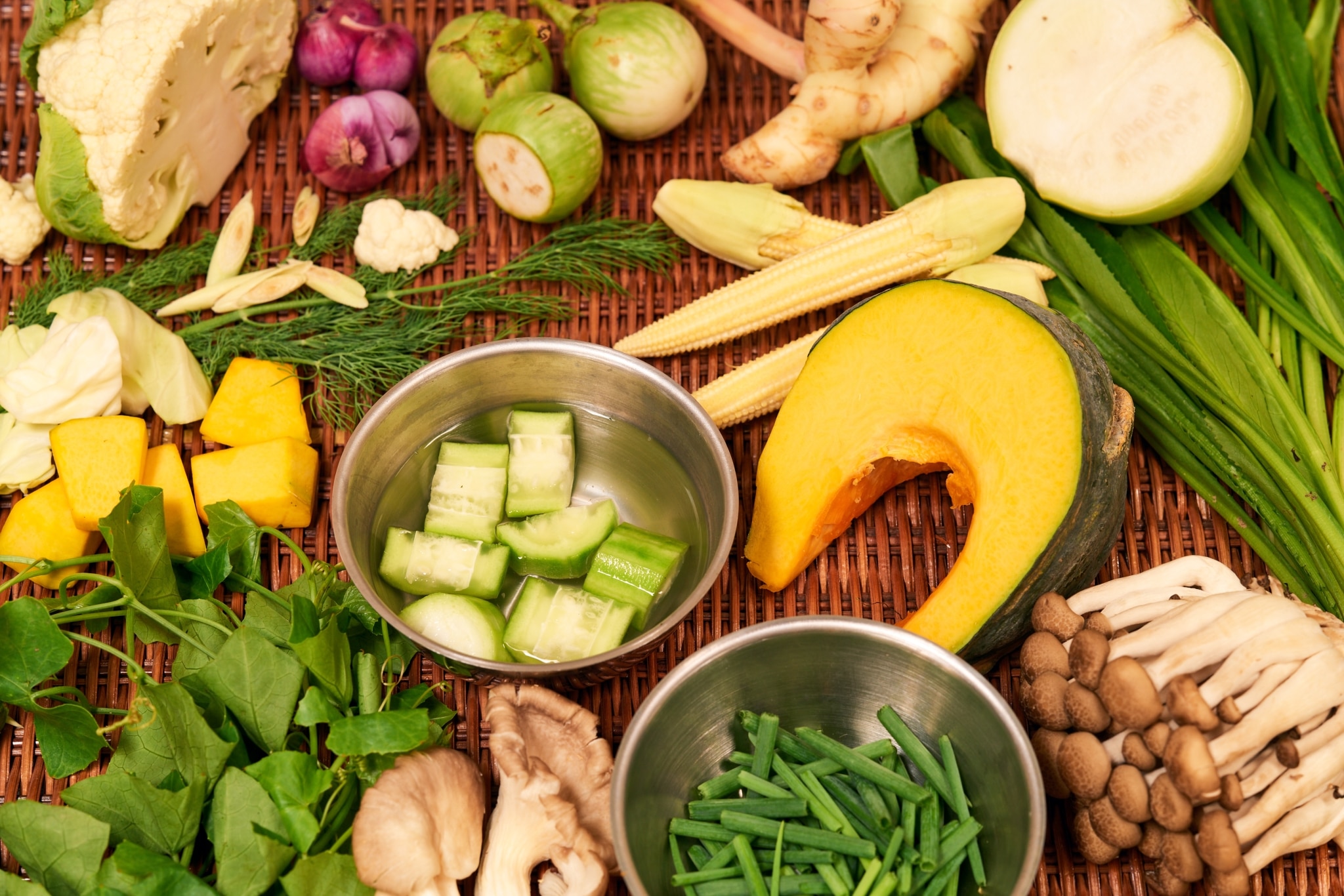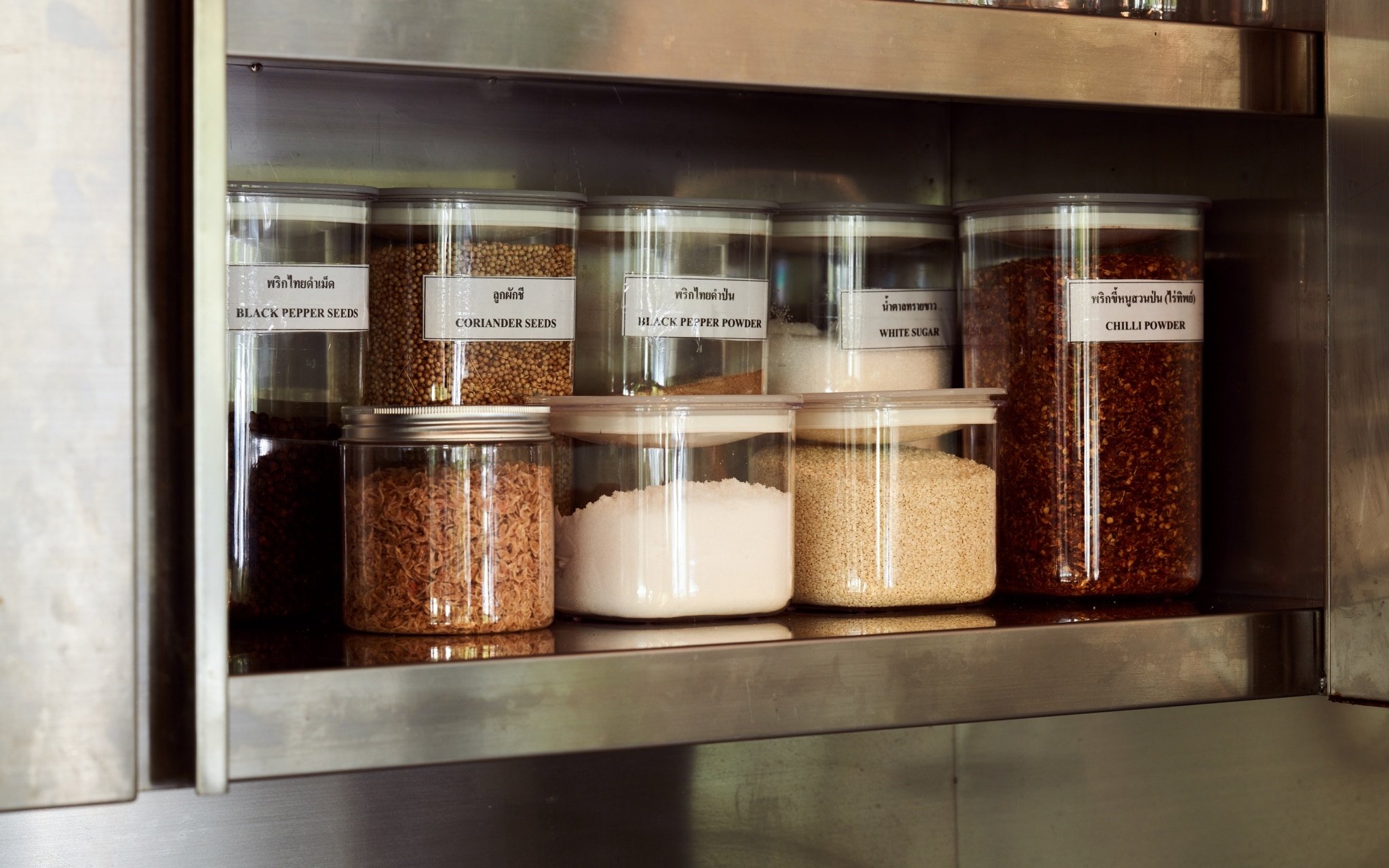Thai foods are not only world-famous for their delectability—they are widely known to be highly nutritious thanks to abundance of herbs that are the heart of Thai cooking. As healthful ingredients are ubiquitous, people in ancient days up until now can create mouth-watering dishes with every bite nourishing the body, and some even consume food as “medicine” to cure illnesses.
Definitely, it’s fortunate that Thailand is bountiful with herbs and vegetables, but we should also be thankful for folks in old days who turn the natural medicine into enjoyable dishes. The brilliance of ancient Thai wisdom is how they can reap the benefits of “heating and cooling effect” of each ingredient—each dish comprises different ingredients with balanced cooling and warming properties, or utilizing the knowledge of heating and cooling effect to heal sicknesses, for example, using cooling greens to cure mouth ulcers, increasing warming herbs to alleviate bloating, etc. In addition, there have been studies on “life elements”—earth, wind, fire, and water—that are unique to an individual for him or her to pick the right foods to enhance health.

“Gaeng Om”—The Flavors of Thai-Laos
Even though there are variations of “Gaeng Om” in each region of Thailand, it is commonly categorized as a Northeastern Thai (Isaan) dish. There is also a Northern Thai version, since the dish is influenced by the food culture of Laos, of which its border runs from the north to the northeast of Thailand. There is more meat in the Northern-style Gaeng Om, whereas the Northeast-style curry is more vegetable-centric.
Gaeng Om is a curry soup that is not too watery, bursting with zesty flavors of assorted veggies and spices. Its herbal savoriness is mainly led by Lao coriander (dill), making it stands out from the crowd. Aside from herbs, meat is also added for more texture and nutrients. Common meats in Gaeng Om are pork, beef, and chicken. In a very traditional version, local people might put in frog meat as a chewy component.
Gaeng Om’s spice level can be adjusted without losing tastiness. Generally, the curry soup is seasoned to be mildly spicy to increase mellowness—not the hot soup that makes you sweat. Like other typical Isaan dishes, “plara” (fermented fish) is a popular flavor enhancer used in the menu.

“Gaeng Liang”—The Curative Cuisine

Gaeng Liang is a traditional food that has been consumed in Thailand for generations. The soup is easy to cook, requiring only a few seasonings. Vegetables, its main ingredients, can be freshly obtained just from one’s backyard garden. Sweet basil leaf is the key ingredient that creates the alluring aroma of the hearty soup, plus carminative property and nutriments to the circulation system. Another key player is pepper, which is in considered a folk medicine, with numerous nourishing properties. Shrimp or grilled fish is commonly added to complement nutrients and taste, at the side of shrimp paste (“kapi” in Thai), which is used as the secret sauce behind Gaeng Liang’s savoriness. All of the ingredients make a blend that delivers refreshing taste with a hint of the scent of sea. Today’s recipes of Gaeng Liang may include chopped sponge gourd and baby corn for a more complex texture, with soup neither too thick nor too thin. Some may add coconut milk to make the soup creamy, but it is not a popular way to cook Gaeng Liang yet.
Apart from being easy-to-cook and tasty, Gaeng Liang can truly be considered as the “food as medicine”, as all vegetables in the recipe have powerful medicinal properties. In the past, the ingredients would be adapted for certain health conditions and consumed as a bowl of medicine in accordance with the food’s hot and cold effect principles to create a healthy balance from within, so one can recover from a sickness.
Medicines from the Backyard Garden
Gaeng Om and Gaeng Liang taste distinctively dissimilar with different main ingredients, and they are cooked using various recipes at different places. Despite the differences, the two kinds of soup share the same essence: all ingredients are excellent for health. Additionally, they are low in calories, so they are undeniably ideal dishes for those who want to control their weight or to stay healthy.
Here are the healing powers of some ingredients found in the two soups

Spicy dill soup.
- Lao coriander or dill – high in antioxidants / good for heart health and digestive system / benefits women’s health
- Lemongrass – helps coping with flu / reducing bloating and flatulence / good for urinary tract health
- Galangal – a thermogenic herb with carminative properties / decreases bloating and indigestion
- Thai eggplant – rich in vitamins and minerals / supports heart health and blood circulation
Spicy mixed vegetable soup
- Sweet basil leaf – improves digestive system / excellent source of antioxidants / detoxifying
- Ivy gourd leaf – contains high vitamin A and beta-carotene / promotes vision and immunity
- Pumpkin – packed with various vitamins / supports healthy blood pressure / improves eye health / supports healthy skin
- Baby corn – loaded with nutrients like protein, calcium, and vitamins
Even though their impacts on health sound miraculous, all of those veggies can simply be found at markets or at the backyard of houses, and they can be home-grown with easy care and maintenance. In addition, their medicinal properties are scientifically proven.
Gaeng Om and Gaeng Liang has been Thailand’s traditional foods since ancient times, full of nourishment and curative effects as if they were already well-researched at that time, offering delicious combinations of healthy ingredients. The dishes could be a proof of the genius of Thai culinary wisdom that have lived on for centuries.


